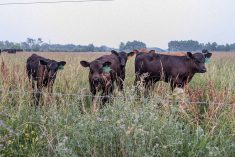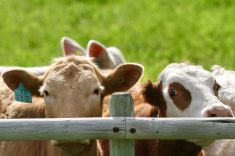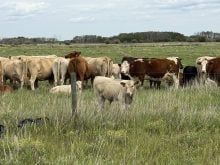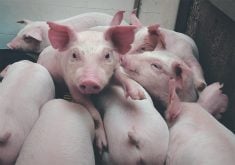CEREAL, Alta. – On the fragile land of southeastern Alberta, preservation of the countryside has never been taken for granted by people living there.
This is hot, windy country battered by years of drought. Yet in years like this where plentiful rain has drenched the soil, native prairie grass looks lush and inviting.
When homesteaders couldn’t make a go of farming in this tough climate, most of the land reverted to the provincial government. In 1938 it was designated as the Special Areas by provincial statute to protect the range from further damage caused by agriculture and natural erosion.
Read Also

Mixed results on new African swine fever vaccine
The new African swine fever vaccine still has issues, but also gave researchers insight into how virus strain impacts protection against the deadly pig disease.
About 30 percent of the land is deeded. The rest is crown land rented to area ranchers. It takes a quarter-section of land to support one animal unit.
About 12,000 people live in the five million designated acres of land along the Saskatchewan-Alberta border.
After 60 years, residents are nervous about what will happen with the land under a new government proposal called Special Places 2000. It suggests a minimum of 12 percent of the provincial land base should be set aside to preserve natural landscape and unique areas.
Jay Slemp, manager of the Special Areas board, said what people fear most is the loss of grazing rights. They worry how the management plan will affect their right to farm.
“Who drafts the management plan? Is it local people, the special areas board or is it … lobby groups at the table?”said Slemp, of Hanna.
Environmentalists can make lots of demands but it doesn’t affect their living, he said.
“It’s very easy to be an environmentalist and live in town.”
The aim of Special Places is to preserve natural landscapes which have been divided into six types. There are natural areas preserved in the Rocky Mountains, but there isn’t enough boreal forest, parkland and long-grass or short-grass prairie included in the protected areas plan which was initiated through the World Wildlife Fund.
During a meeting in Cereal, Dave Chabillon, assistant deputy minister of the department of environmental protection, assured farmers the proposal wouldn’t force them off the land.
Since the proposal was released at the end of 1993, Chabillon has received about 4,000 letters. About one-third support the concept, another third are opposed and the rest are undecided.
Rancher Ed Curry of Youngstown objected “to the implication that ranchers are ruining the land.”
A healthy wildlife population exists because of the top condition of grazing land maintained by ranchers. Other ranchers raised concerns over maintaining grazing rights and possession of deeded land under the proposal.
To show they are serious about keeping the area intact, the group at Cereal passed a motion asking Unifarm to defend before government their request for special consideration to the Special Areas.
They say it is already a special place where the ecology is being properly maintained and the area should be excluded from the Special Places plan.
“What we’re really interested in is protecting the grassland. That’s what Special Areas is about. That’s what the people out here want to do … we’ve protected it up to now.
“We can certainly continue to give it the protection we have in the past, ” said Slemp.”We may be able to enhance it.”















